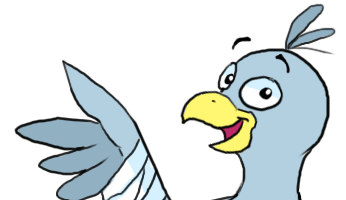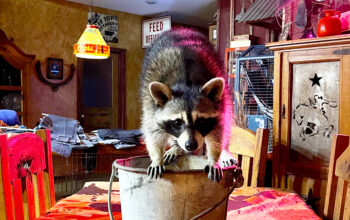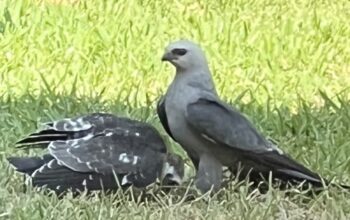Stopping Your Bird from Plucking Feathers is one of the hardest undertakings related to your bird. It is distressing and potentially life threatening to your bird. The following is one prospective on the problem. I assure you there are many approaches and you may have to do a lot of trial and error before you find what works for you. I wrote about Fred, who pulled out his feathers and ripped off chunks of skin. It is heart breaking.
(Adapted from Judy Leech’s Parrots at petparrot.com and aviancollar.com)
If your parrot is plucking his feathers out you need to attend to the problem as soon as possible before it becomes an established habit. If the plucking goes on too long, the feathers will never grow back since the follicle will be damaged.
Plucking and molting are two different behaviors. Parrots will molt damaged feathers twice a year and grow new feathers to replace them. This usually happens in spring and fall. But when molting, there will never be exposed patches of skin, or large patches of down showing. The only exception might be a young parrot in its first molt.
Each individual bird is different and the cause and remedy may differ depending on the bird.
Reasons for Plucking and Chewing Feathers
Maturity – During the pubescent phase maturity, parrots go through a period of hormone imbalance like a maturing teenager. This period is very confusing to them because they don’t understand what they are feeling. This does not necessarily mean that they are ready for breeding or parenthood any more than a teenager would be. In fact, a pet parrot would be even less prepared for a breeding situation. They don’t have other parrots or peers to learn from. Breeding and raising young is not instinctive for parrots. If they live with a flock in the wild, they learn from other parrots.
Abuse/Neglect – In most cases, what seems to be neglect/abuse, is ignorance of the parrot’s needs or a life too busy to include the bird. It is also possible that the parrot has developed habits that can no longer be tolerated, and so was shut into an area where it is always alone.
Dietary Deficiency or Imbalance – An improper diet that is deficient in, or has an excess, of nutrients may also be a cause for plucking or chewing. For example, a diet that does not have enough protein may cause a parrot to start eating his own feathers to supplement his diet. Sometime a diet too low in fat will cause plucking in some greys. If your parrot were plucking, it would be wise to have a complete physical done by an avian veterinarian to try to rule out a deficiency as the cause. The deficiency of some nutrients can be determined by blood tests.
Lack of Space – A lack of necessary space in its cage can result in feather plucking especially for birds that spend most of the time in the cage.
Boredom – Boredom and lack of stimulus is probably the most common cause of plucking. Parrots are very intelligent creatures. If left for long period with nothing to play with and nothing to watch, they will find something to occupy themselves. Pulling feathers, one by one, and watching them float to the bottom of the cage can be fun to do if there is nothing else available. Try to imagine how you might feel if you were left alone for long periods in a 6′ x 6′ room with no window and nothing but a chair in the middle. At the very least, you might start chewing your nails.
If you must leave your parrot alone for extended periods of time, make sure that he has a few different toys to play with. Even leaving on a radio or television can help keep him entertained while you are gone.
Change or Emotional Upset – Parrots often become comfortable and secure with routine. When the routine is suddenly changed, they become upset to the point of being physically destructive. Relocation to a new home, or even moving the cage to a different room, can set off a sudden desire to pluck. Move the cage to a more secure location and the plucking can stop as suddenly as it started.
Loss of a loved one or even emotional upset and high tension in the family group can cause them to start plucking in frustration. Upset, they feel helpless, so they take out their frustrations on themselves.
Over grooming by a Mate – Sometimes you can put two beautifully feathered parrots together only to find in a short time that one or both has had all or most of their feathers removed. In some cases, this can be caused by an overzealous mate trying to do a really good job in grooming his beloved mate.
Habit – When a parrot has been plucking for a long time, it often becomes a habit, like nail biting. Even if the original cause of the plucking is remedied, they continue to pull feathers. If you were confident that every possible cause has been investigated and eliminated, and the plucking persists, the next step would be to help your pet to break the habit.
Medical Problem – Parrots that are kept in areas that have possible fungal or mold grows can develop fungal infections. Most of these infections are passed via spores in the air. The spores cause problems in the skin and/or the lungs and air sacs. The most common is known as aspergillum. This mold can cause problems with breathing, but sometimes it goes unnoticed. Infections of this kind can cause plucking and sometimes self-mutilation. This problem can be remedied with an anti-fungal medication.
Possible Remedies
1) Determine the cause. Depending on the cause, the cure might be a more balanced diet; new chewable toys for stimulus, moving the cage to a more secure location, a companion bird, medical treatment, etc.
2) More attention – Spending more time handling and cuddling the bird every day can ease emotional upset and loneliness. Some cases of plucking have been resolved by this alone.
3) Mechanical approaches.
Collar – This is a circular disc cut from a rigid material with a slit cut to the middle and with a circle in the middle a bit larger than the diameter of the parrot’s neck. It is put around the parrot’s neck and fastened, usually by tape, at the slit. When it is on the parrot, it looks something like a cone with his head in the middle. This cone prevents the bird from reaching any of his feathers to pull them. This may seem a perfect solution to some, but it also makes climbing in a cage and holding food to eat very difficult. For a parrot that has started plucking because of emotional upset or a high-strung bird, this may only worsen the problem once the collar is removed.
Homemade vest – Make a vest from an old baby diaper, a rectangle with 3 long ties on each side. It should be the length from just above the breastbone to his vent. The first set of ties should be tied around his neck. The second set should go under his wings and tie around his back. The third set goes between his legs and ties over his tail. A “V” cut should be cut out under the vent so he doesn’t soil it. Leave it on for 3 months so the feathers can grow back.
More cage space – A cage should be large enough for the bird to spread its wings without touching the sides or the hanging toys. Be careful not to overcrowd the cage with toys.
4) Once the problem is corrected, a possible habit must be discouraged or broken. Sometimes it can be as simple as spray misting the bird’s remaining and new feathers with something that doesn’t taste good. Since all parrots have different likes and dislikes, the mixture used must be something that your parrot doesn’t like. One mixture would be mustard and water. None of these mixtures would be effective for a bird that plucked down to the skin, and they would be painful for one that has started to self-mutilate. Immediate attention by a qualified avian vet is necessary for any parrot that has created open sores.
Clean the bird’s bathwater regularly and train her to use it. You can do this simply by placing a large bowl full of clean water at the bottom of the cage, and then spraying her lightly with a spray bottle filled with water. The sprayed water will imitate rain and encourage her to bathe.
Mix aloe vera juice (not cream or gel) with water and mist the bird gently once a day. The mixture should be about half aloe vera, half water. It helps reduce dander and will soothe any itchiness beneath the bird’s feathers.





